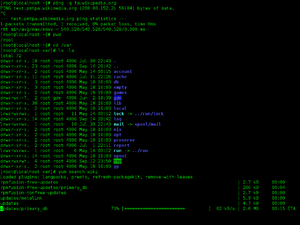
Back Bevellyn Afrikaans واجهة سطر الأوامر Arabic Llinia d'órdenes AST Əmr sətiri Azerbaijani Інтэрфейс каманднага радка Byelorussian Интерфейс с команден ред Bulgarian কমান্ড-লাইন ইন্টারফেস Bengali/Bangla Interfejs komandne linije BS Línia d'ordres Catalan نێوانەڕووی ھێڵ-فەرمان CKB


A command-line interface (CLI) is a means of interacting with a computer program by inputting lines of text called command-lines. Command-line interfaces emerged in the mid-1960s, on computer terminals, as an interactive and more user-friendly alternative to the non-interactive interface available with punched cards.
Today, most computer users rely on graphical user interfaces ("GUIs") instead of CLIs. However, many programs and operating system utilities lack GUIs, and are intended to be used through CLIs.
Knowledge of CLIs is also useful for writing scripts. Programs that have CLIs are generally easy to automate via scripting, since command-lines, being mere lines of text, are easy to specify in code.
CLIs are made possible by command-line interpreters or command-line processors, which are programs that read command-lines and carry out the commands.
Alternatives to CLIs include GUIs (most notably desktop metaphors with a mouse pointer, such as Microsoft Windows), text-based user interface menus (such as DOS Shell and IBM AIX SMIT), and keyboard shortcuts.